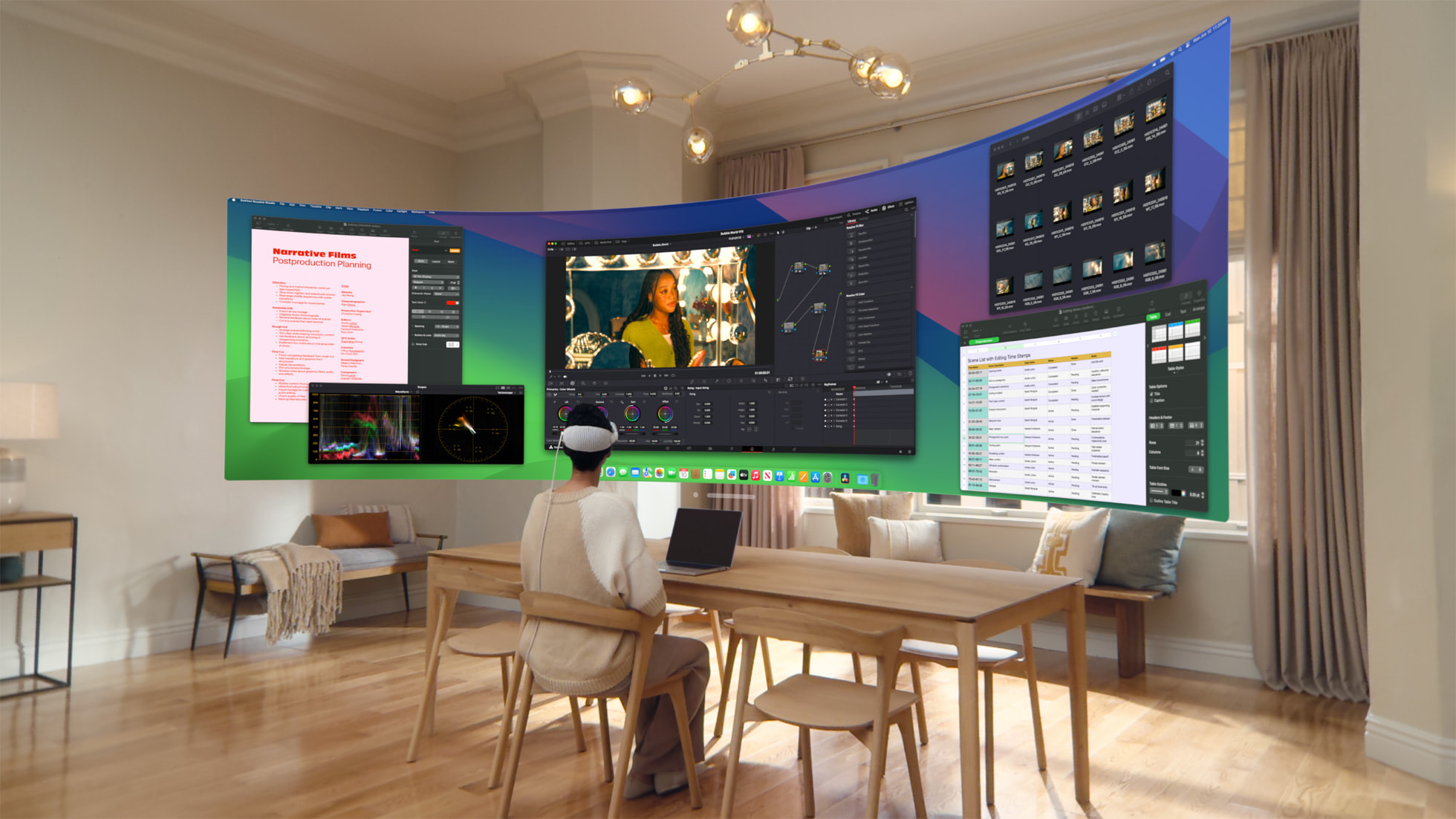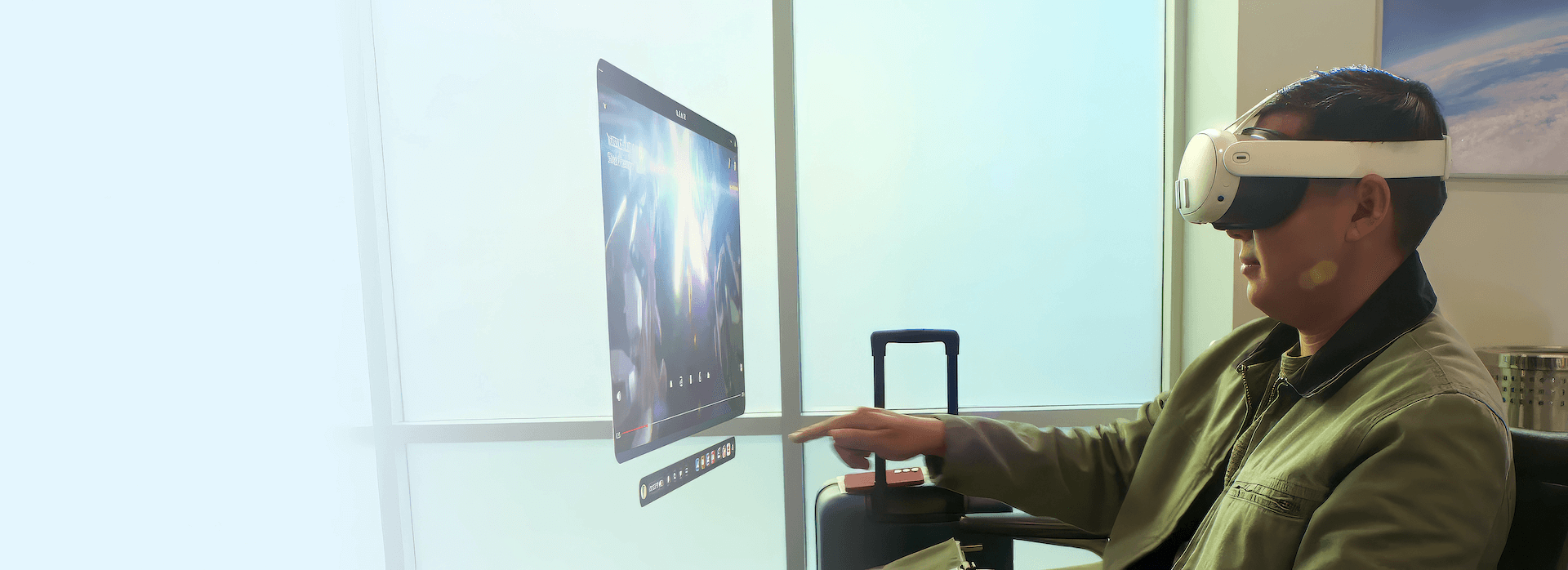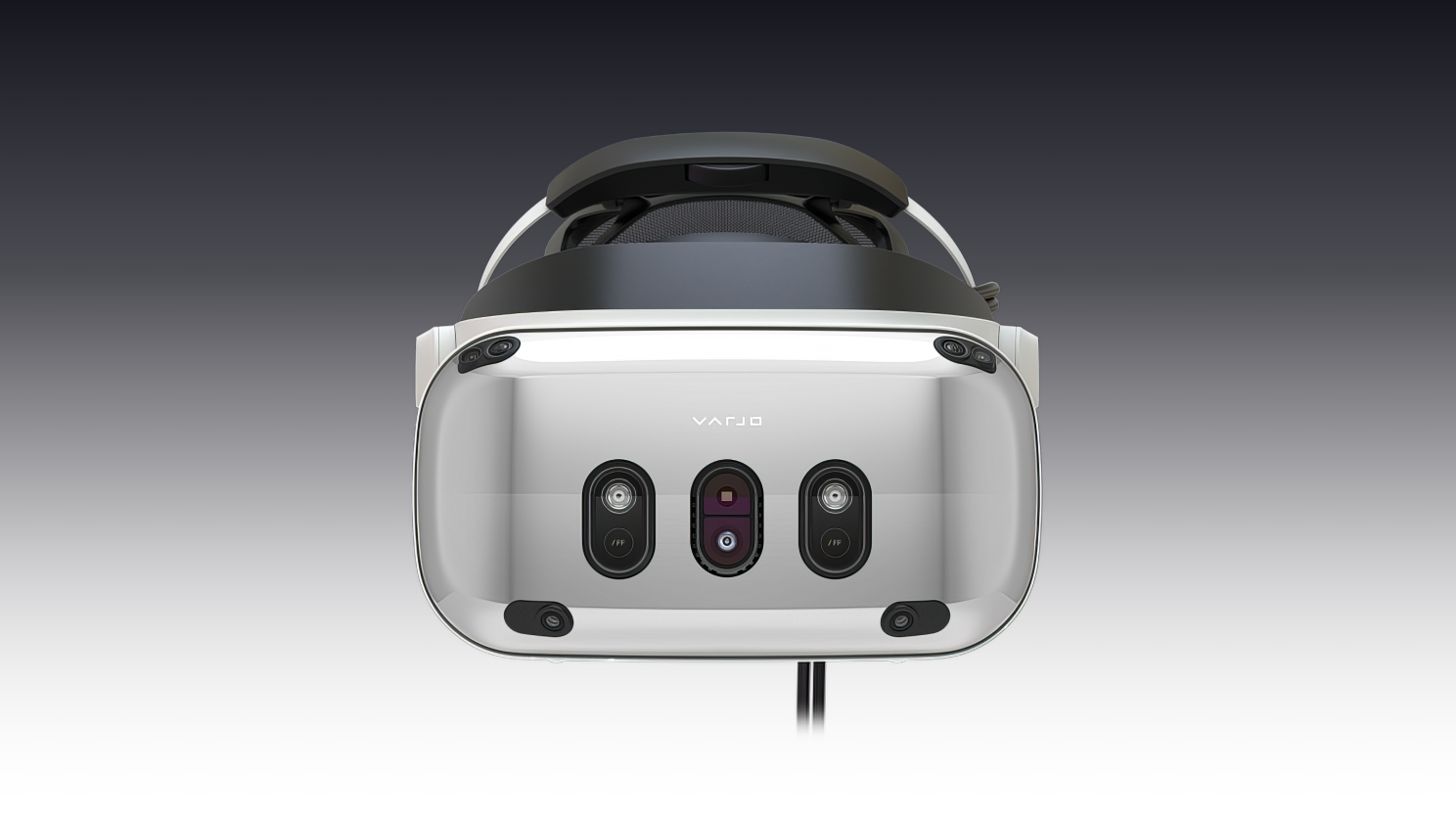Experiential XR Design: Driving User Efficiency and Engagement
Table of Contents
- What is XR Design?
- User Experience (UX) Design for Extended Reality
- XR Technology Trends and Advancements
- Hand-Object Interactions Analysis
- Tracking for Better Convenience
- Foveated Rendering for High-End Graphics and Immersion
- Enhanced Functionality
- What should be considered when designing extended reality (XR)?
- Summary
- About Lucid Reality Labs
The Extended Reality (XR) market is blooming with solutions for diverse domains and industries. With new hardware launches and technical advancements occurring daily, there’s an increasing demand for higher content quality and visual fidelity, as well as more haptics and integration of the new features and functions for better user convenience and performance. While the design aspect of XR solutions continues to evolve, there’s still ample room for improvement in crafting immersive XR products, and dedication to systemic thinking and using experiential design tools is crucial here. Lucid Reality Labs tracks the market’s progress while developing our excellence in visual fidelity and design for impact, and here’s what we see.
What is XR Design?
Extended Reality Design refers to the creation and optimization of interfaces and interactions within extended reality (XR) technologies, which encompass augmented reality (AR), virtual reality (VR), and mixed reality (MR). This design process focuses on seamlessly blending physical and digital worlds, allowing users to interact with virtual objects and elements in a native, intuitive manner. By carefully crafting interaction design and user experiences, XR Design aims to provide users with immersive and engaging virtual worlds. This involves not only placing virtual elements within a space but also ensuring that these interactions feel natural and intuitive, enhancing the overall user experience and making the technology more accessible and effective.
XR design also implies prototyping that enables private and public sector organizations to explore and utilize the opportunities that XR technology offers for their industry, prototyping new and transforming existing products and solutions for better performance, accessibility, and elevated company results overall. Prototyping in XR is particularly critical because it allows designers and developers to test and refine the interactions and experiences in a controlled environment before they are deployed in the real world. This iterative process helps in identifying potential issues and areas for improvement, thereby enhancing the final product’s quality and effectiveness.

Source: Apple visionOS 2 Update
User Experience (UX) Design for Extended Reality
User experience (UX) in Extended reality solutions defines the overall experience and satisfaction a user has while interacting with an extended reality environment. In XR solutions, a well-designed user experience is crucial for maximizing engagement, satisfaction, and effectiveness, whether the application is for entertainment, training, education, or other purposes.User experience (UX) plays a crucial role in XR experiences, affecting how fluent and confident users feel immersed in them. Hence, the industry strives for consistency and natural interactions in solutions, carefully crafting essential components like intuitive consumer journey, smooth assistance and guidance, comfort of usage, nativity and clarity, haptic and tactile feedback, and eye tracking that ensures personalization, response, and the most effective performance. A well-crafted UX in XR can significantly reduce user fatigue, a common issue in prolonged virtual interactions, and enhance the overall enjoyment and effectiveness of the experience.Lucid Reality Labs has identified several areas for development in current XR interfaces that can be addressed for more realistic and impeccable experiences. We emphasize consistency and natural interaction and eliminate the need for additional explanations, assistance, or additional feedback, which may detract users from the immersive experience. While some solutions still need to develop more in-depth and accurate haptic, tactile, and audio feedback to address users’ difficulties in understanding if they are performing tasks correctly, the whole industry will benefit from and elevate the user experience in XR environments by creating more coherent and intuitive interfaces.Overall, the XR Design System can be instrumental in accelerating the design process, reducing development time and cost, and ensuring consistent quality across different users and devices. Including interactions like hand tracking or controller use, and already-mentioned feedback mechanisms can pave the way to design efficacy. Lastly, a system means adaptability and inclusion, aiming to make all the solutions developed within it adaptable to various XR devices, screen resolutions, and interaction models.

Source: Meta
Components of an XR Design System
A design system in XR refers to a set of guidelines, tools, and reusable components that help create consistent and cohesive user interfaces and experiences across different XR platforms and applications. It encompasses various elements, including interaction patterns, visual design, and user interface (UI) components, to ensure a unified and satisfying user experience while immersing in the XR solution.
- Visual Design Guidelines: These include standards for color schemes, typography, iconography, and the layout of UI elements. The aim is to create a visually coherent and aesthetically pleasing experience that is consistent across different XR applications. Consistency in visual design helps users to navigate and interact with the environment more efficiently, fostering a sense of familiarity and ease of use.
- Interaction Patterns: Interaction patterns define how users interact with virtual elements, whether through hand gestures, eye-tracking, voice commands, or traditional input devices like controllers. These patterns help ensure that interactions are intuitive and consistent, reducing users’ learning curve. Standardized interaction patterns also enable designers to predict user behavior more accurately, leading to more refined and user-friendly interfaces.
- Feedback Mechanisms: Effective XR design systems include guidelines for providing feedback to users through haptic responses, audio cues, and visual signals. This feedback is crucial for confirming actions, guiding users, and enhancing the overall immersion. For instance, subtle haptic feedback can simulate the feeling of touching a virtual object, while audio cues can signal the successful completion of a task, thereby enriching the sensory experience.
- Component Libraries: Component libraries contain pre-designed UI elements like buttons, panels, and menus that can be reused across different projects. This not only speeds up the development process but also ensures consistency in the user interface. A well-organized component library enables rapid prototyping and iterative testing, which are vital for refining XR applications.
- Adaptability and Responsiveness: An XR design system must be adaptable to various devices, screen resolutions, and interaction models. This flexibility is essential for ensuring that applications function well across different XR hardware, such as AR glasses, VR headsets, and mixed reality devices. Given the diverse range of devices and user contexts, adaptability ensures that the user experience remains seamless and coherent, regardless of the hardware or environment.
- Usability and Accessibility: The design system should prioritize usability and accessibility, making sure that XR applications are user-friendly for a vast spectrum of users, including those with disabilities. This includes features like customizable interfaces and alternative input methods. Ensuring accessibility in XR is not just about compliance but also about expanding the user base and making immersive experiences available to everyone, regardless of their physical or cognitive abilities.
Read also: Three Trends That Shape XR Today: Apple & Meta Scenarios
XR Technology Trends and Advancements
XR market players aiming at leadership foresee immense opportunities in considering all the technology’s blockages and understanding the benefits they will offer, such as enhanced development process, impact measurement, and unique advantage on the market. Let’s look at recent steps major companies have taken to move to better experiential design and enhanced features of their solutions and products, including enhanced hand-object interactions analysis, a new spatial interface controlled by eyes, foveated rendering for high-end graphics and immersion, XR device QR Code Scanner, and more.

Source: Meta HOT3D Dataset
Hand-Object Interactions Analysis
Meta engineers recently presented the HOT3D dataset, a tool designed to enhance understanding of how humans use their hands to interact with objects and communicate. This benchmark dataset is poised to unlock new opportunities in computer vision research, particularly in transferring manual skills from experts to less experienced users or robots, aiding AI assistants in understanding user actions and enabling innovative input methods for AR/VR users. Key Features of the HOT3D Dataset are comprehensive data collections, for example, 1+M multi-view frames of hand-object interactions, high-fidelity 3D models, advanced tracking capabilities, and APIs with code samples for accessing and visualizing image streams and high-quality 3D poses. These features collectively elevate development and provide invaluable insights. As a result, Meta’s HOT3D dataset is poised to become an essential resource for researchers and developers in the XR and AI fields, significantly advancing the realism and functionality of XR applications and pushing the industry forward.

Source: Apple visionOS 2 Update
Tracking for Better Convenience
In the meantime, Apple introduced an upcoming visionOS 2, a significant update to the Apple Vision Pro headset that, among other offers, introduces a noteworthy way for users to create spatial content and enables intuitive hand gestures to access vital information at a glance quickly. visionOS 2 introduces a new spatial interface controlled by eyes, hands, and voice, making navigation on Apple Vision Pro faster and easier. New hand gestures provide quick access to features like Home View and Control Centre and allow actions like adjusting volume and viewing battery levels. Also, enhancements include a higher resolution Mac Virtual Display, mouse support, and visibility of the Magic Keyboard even in immersive environments. Users now can personalize Home View, use Travel Mode with new train support, and add Guest Users.

Source: Varjo XR-4 Series
Foveated Rendering for High-End Graphics and Immersion
One of the most prominent global XR hardware developers, Varjo is committed to extremely realistic visual fidelity and full immersion into the headset user’s experience. Therefore, they are actively working to combine Quad view, foveated rendering, and OpenXR. Foveated rendering is the technique of rendering graphics with the desired resolution that ideally matches the level of detail that the eye perceives. With high-resolution rendering focused on where the user is looking, the depth of detail and realism grows, boosting immersion in XR experiences. As the Varjo team claims, these benefits are universally valuable, however, they are especially critical in high-end graphics, where enhanced immersion and significant performance improvements are most appreciated and envisioned.

Source: Meta Quest v67 Update
Enhanced Functionality
The v67 update for Meta headsets introduces several new features and enhancements to make the user experience more convenient and smooth. Key updates on Quest 3 include users gaining a Wi-Fi QR Code Scanner feature for more accessible network connections, and immersive media continuity allows videos to be accessed without closing the current VR app. With these updates, Meta is experimenting with a window management solution that ensures convenience and nativity for users while all content transitions to 3D design. It is worth noting that this feature remains experimental.Read also: Alliancing for Ecosystem Competition: What Google and Magic Leap’s partnership can bring to the XR market?
What should be considered when designing extended reality (XR)?
Experiential design of the XR solutions that imply high-quality interactions and feedback is essential for a native and enjoyable user experience, and there are many more examples of how the market targets this excellence. Consideration of personal touchpoints, usage of additional devices, and various input methods enhances usability and user satisfaction when companies design XR solutions. These insights highlight the importance of a well-designed XR system that prioritizes user experience, provides comprehensive feedback, and maintains adaptability and consistency across different platforms and devices. At Lucid Reality Labs, we prioritize visual fidelity as a strategic focus, recognizing it as a critical differentiator, and we are eager to share our approach and expertise in leveraging XR Design Systems to enhance visual fidelity and spatial user experience that can benefit industry standards.
Summary
The XR market is rapidly advancing with innovations in hardware and software, driving a need for higher content quality, visual fidelity, and enhanced user interactions. Experiential design is crucial in creating seamless, intuitive user interfaces that blend physical and digital worlds, allowing for more natural interactions with virtual objects. This approach not only improves user engagement and satisfaction but also makes XR technologies more accessible and effective across various applications, from healthcare to education.The key features in XR experience design include the development of haptic feedback, eye-tracking for personalized interactions, and enhanced visual systems like Varjo’s foveated rendering for improved realism. Companies like Meta and Apple are introducing features that make XR experiences more immersive and user-friendly, such as Meta’s HOT3D dataset for better hand-object interaction analysis and Apple’s visionOS 2 for intuitive navigation and content creation. These innovations highlight the industry’s focus on elevating XR design to maximize usability and user experience while broadening the boundaries of extended reality.
About Lucid Reality Labs
Lucid Reality Labs is a visionary XR development company that crafts complex immersive solutions through spatial technology – from concept & design to development & support, with a strategic focus on Healthcare, Life Science, Aerospace & Defense, and many more. We equip industries with the boundless potential of immersive technology. The Lucid Reality Labs’ Team believes that XR can contribute to the improvement of the quality of life for people around the globe. With our mission of disrupting global challenges with responsible technology, the company delivers solutions with impact that elevate industries with immersive capabilities. Check the award-winning use cases created by Lucid Reality Labs here.Authors collective: Lucid Reality Labs Marketing Team, subject matter experts.
